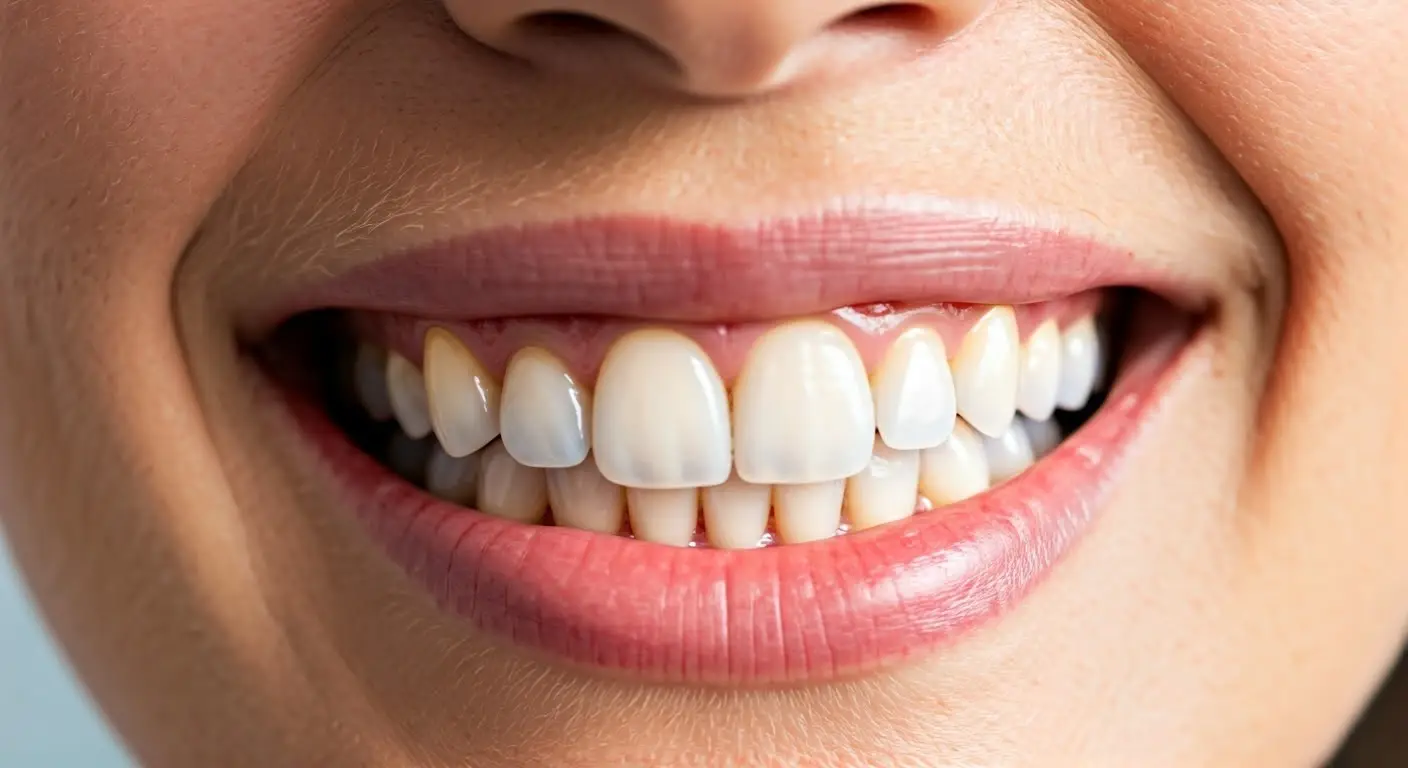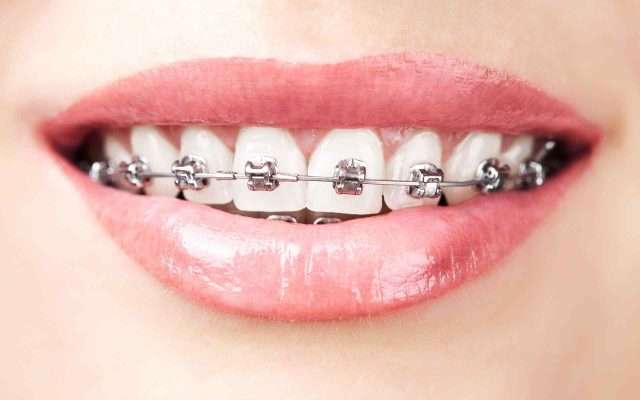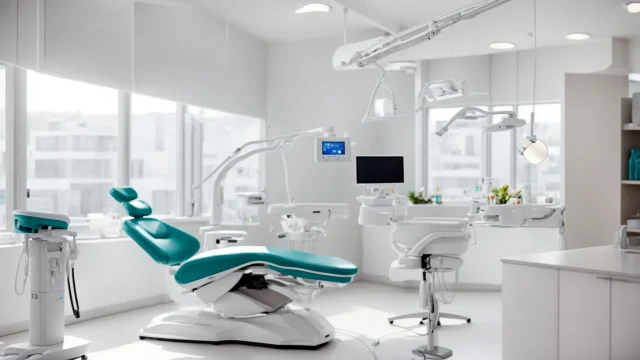
Key Highlights
- Do you have missing teeth? bridges can help you get your smile back and improve your oral health.
- We have different types of bridges, such as traditional, cantilever, and implant-supported options.
- Our skilled dentists care about your comfort and use modern techniques.
- We give clear aftercare instructions so your bridge can last for many years.
- We work with your insurance to make sure you have access to good dental care.
Introduction
Are you having a hard time because of missing teeth? At Saddleback Dental in Mission Viejo, we know how missing teeth can affect your confidence and oral health. That is why we provide affordable dental bridges. They are a strong and natural-looking way to get your smile back.
Understanding Dental Bridges

A dental bridge is an artificial device that replaces one or more missing teeth with false teeth. It fills the gap caused by these missing teeth. A bridge has two or more crowns placed on the natural teeth or implants on either side of the gap. These crowns hold the artificial tooth, called a pontic. This helps you chew better, speak clearly, and improves the look of your smile.
Using bridges can stop other teeth from moving out of place. They can help keep the shape of your face. They also help share the force of your bite evenly.
The Basics of Dental Bridges
To understand how dental bridges work, it’s important to know their main parts. First, we have the abutment teeth, also known as the abutment tooth for some types of bridges. These teeth are next to the space where you have lost a tooth. They act as the anchors for the bridge and give it support, similar to a combination of these materials. You can think of them as the pillars of a bridge! Next is the pontic, which is the artificial tooth that fills the gap. It’s made to match the color, size, and shape of your natural teeth. Lastly, the success of a dental bridge depends on how healthy and strong your natural teeth are, especially the abutment teeth.
Types of Dental Bridges Available
Choosing the right type of bridge depends on several factors, such as the number of teeth and the location of the missing tooth or teeth and the health of the surrounding teeth. Here are the most common types:
Type of Bridge | Description |
Traditional bridge | Most common type of bridge; uses dental crowns on both sides of the gap to support the pontic. |
Cantilever bridge | Used when there are adjacent teeth on only one side of a gap; the pontic is anchored to one or more teeth on a single side of a gap. |
Maryland bridge | Typically used for front teeth; involves metal or porcelain wings bonded to the back of the adjacent teeth. |
Implant-supported bridge | Considered the strongest and most durable option; involves placing dental implants in the jawbone to support the bridge, offering unparalleled stability. |
Identifying the Need for a Dental Bridge
Have you lost a tooth because of an injury, gum disease, or tooth decay? While it may seem like just a cosmetic problem, a missing tooth can greatly affect your oral health and overall well-being. If you do not treat it, even one missing tooth can cause many complications later. This could mean needing more extensive dental work in the future.
Common Signs You Might Need a Dental Bridge
One clear sign of a missing tooth is the gap it leaves behind. But there are other signs you should pay attention to. You might have trouble chewing or biting certain foods, especially on the side where the tooth is missing. Changes in your bite, where your teeth no longer fit together like before, could mean you need a bridge. If you also find yourself moving your jaw in an odd way to help with chewing, it’s important to talk to our dentists at Saddleback Dental.
How Missing Teeth Affect Your Oral Health
What many people do not know is that missing teeth can harm the jawbone. The jawbone requires the push from teeth to stay strong and dense. When a tooth is lost, the bone beneath can start to shrink. This can change your facial shape. It may also cause nearby teeth to move into the empty space. This movement can lead to crooked teeth and problems with your bite. Missing teeth can hurt your speech, especially if you are missing front teeth. Some words may be hard to say, which can affect how you talk and feel about yourself.
The Process of Getting a Bridge at Saddleback Dental

At Saddleback Dental, we focus on giving you personal care. We use new technology and less invasive methods. Getting a dental bridge usually takes several visits. We work hard to make each visit easy and comfortable. From the first check-up to the final fitting of your bridge, we care about your comfort. We will make sure you know what’s happening at each step.
Initial Consultation and Examination
Your path to a better smile starts with a complete first visit and exam by our skilled dentist. During this appointment, the dentist checks your teeth, gums, and overall oral health. This helps us see if a bridge is the right choice for you. We listen to your worries and answer your questions. We also explain the procedure clearly. We think that understanding your options helps you make good decisions about your dental health.
Custom Designing Your Dental Bridge
Once we know that a dental bridge is right for you, we will create a custom bridge that fits well and looks great. We look at some things. These include the type of bridge you need, the materials we will use, and the shade of your natural teeth. This helps us get a natural-looking result. We’ll make a dental impression of your teeth. This will help us design your personalized bridge. Our skilled technicians use this impression to make a bridge that fits just right. It will help you chew comfortably and make your smile look more beautiful.
The Procedure: What to Expect
On the day of the dental bridge procedure, we want you to feel completely comfortable. We use local anesthesia to numb the area where the bridge will go. This makes sure you have a painless experience. After the anesthesia works, the dentist will reshape the abutment teeth gently. This helps fit the supporting crowns of the bridge.
Next, we will put in a temporary bridge cement to protect the abutment teeth. This stays in place while we carefully make your permanent bridge in our dental lab. When your custom-made bridge is ready, you will come back to our office for its final placement.
Benefits of Choosing Saddleback Dental for Your Bridge

At Saddleback Dental, we focus on giving our patients great dental care. We use the latest technology in a friendly and comfortable place. Our team believes in putting patients first. We take time to listen to your needs and worries. This helps us offer the best solutions for your specific oral health goals.
Expertise of the Dental Team
Our team has experienced dentists. They work hard to stay updated on new dental technology and techniques. We are proud to be part of the American Dental Association. This shows our commitment to high-quality dental care. You will also meet our friendly dental hygienists. They are key to your oral health. They will help you with good oral hygiene practices. This ensures your gums stay healthy and your new bridge lasts for many years.
State-of-the-Art Technology and Techniques
At Saddleback Dental, we use advanced technology to make your experience better and get great results. To make sure your dental bridge lasts a long time, we choose high-quality materials like porcelain or ceramic. These materials look natural and are very strong and do not wear out easily. We are dedicated to using the latest dental tools, which helps us make clear treatment plans and get reliable results.
Aftercare and Maintenance of Dental Bridges
Once your dental bridge is in place after an extraction, it’s important to take good care of it for good oral health. This will help it last longer and keep your mouth healthy. Just like your natural teeth, your bridge needs daily cleaning and regular visits to the dentist. Our team gives clear instructions on how to look after your bridge. We are always here to answer any questions or worries you might have.
Tips for Maintaining Your Dental Bridge
Maintaining your new dental bridge can be simple. First, it’s important to keep your mouth clean. Brush your teeth at least two times a day with fluoride toothpaste. Using a soft-bristled toothbrush is good too. It helps clean gently around your bridge. Make sure to reach all the small spaces.
Flossing every day is also very important for plaque removal. You can use regular floss or interdental brushes. This will help remove any food stuck between your teeth and under your bridge. To keep your bridge safe, avoid biting hard foods or ice. Doing this can put too much pressure on the bridge and might harm it.
Regular Check-Ups and Adjustments
Just like you plan regular visits to get cleanings and checkups for your natural teeth, it’s important to keep up with dentist visits for your dental bridge. These visits help our dentists look carefully at your bridge, see how it fits, and fix any problems that may come up. Sometimes, small adjustments may be needed, especially soon after you get your bridge. By taking care of these little changes quickly, we can stop small issues from turning into bigger, more complicated ones.
Cost Considerations and Insurance Coverage
We know that the cost of dental work is a big worry for our patients. At Saddleback Dental, we work hard to make our services affordable while still keeping the quality high. We believe that everyone should have a healthy and confident smile. That’s why we provide many payment choices to fit different budgets.
How We Make Dental Bridges Affordable
We are dedicated to giving you affordable dental care. We work with you to find cost-effective options. Whether you have dental insurance or not, our team will help you understand your financing choices. This way, you can make smart decisions that work for you. We have different financial assistance programs, including flexible payment plans to match your budget. Sometimes, we can also provide sliding scale fees based on your income. This helps to make sure that money issues do not stop you from getting quality dental care.
Working With Your Insurance for Maximum Benefits
If you have dental insurance, our team will work hard to help you get the most from your plan. We have a lot of experience with benefits coordination and pre-authorization. We will take care of the paperwork and talk to your insurance provider for you. Before starting any treatment, we will give you an estimate of costs. This will include what your insurance might cover and any expenses you may need to pay out of pocket. Our goal is to be clear and avoid any unexpected costs. This way, you can focus on your oral health without worry.
Frequently Asked Questions
How Long Will My Dental Bridge Last?
A permanent bridge can last 10-15 years or even longer if you take proper care of it. It is very important to maintain good oral hygiene. Regular dental checkups are also essential for making sure your dental bridge lasts a long time.
Is the Procedure for Getting a Dental Bridge Painful?
We use anesthesia during the procedure to help reduce discomfort. You might feel some pressure, but it shouldn’t hurt. We also provide options for pain management if you experience any discomfort after the procedure.
Can I Eat Normally With a Dental Bridge?
One big benefit of dental bridges is that they can help you eat normally again. At first, your mouth may need some time to get used to the bridge. But after that, you will be able to enjoy most foods.
How Do I Care for My Dental Bridge?
Caring for your dental bridge is like taking care of your natural teeth. Make sure to brush and floss often, just like your hygienist suggests. Also, remember to visit the dentist regularly for cleanings and checkups.
Are Dental Bridges Covered by Insurance?
Dental insurance for bridges can be different based on your policy. Our team is here to help you understand your coverage and any out-of-pocket costs you might have.








